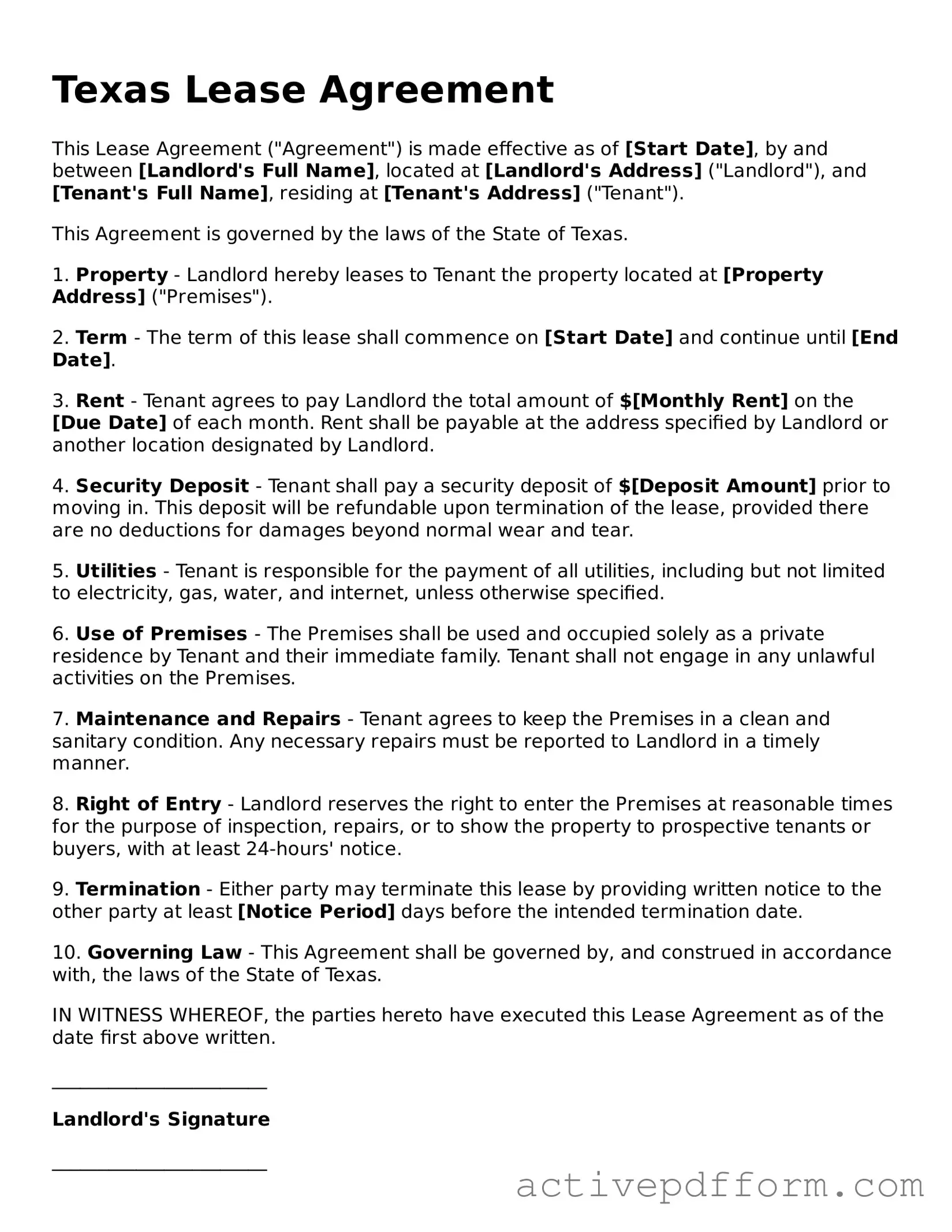What is a Texas Lease Agreement form?
A Texas Lease Agreement form is a legal document that outlines the terms and conditions under which a landlord rents out property to a tenant in Texas. This form includes details such as the rental amount, duration of the lease, responsibilities of both parties, and any rules or restrictions applicable to the property. It serves to protect the rights of both the landlord and tenant throughout the rental period.
What are the essential components of a Texas Lease Agreement?
Key components of a Texas Lease Agreement include the names of the landlord and tenant, the property address, the lease term (whether it is month-to-month or a fixed term), the rental amount, security deposit details, maintenance responsibilities, and rules regarding pets or smoking. Additionally, it may include provisions for late fees, termination of the lease, and procedures for handling disputes.
Is a Texas Lease Agreement required to be in writing?
While oral agreements can be valid in Texas, it is highly recommended to have a written lease agreement. A written document provides clarity and serves as evidence in case of disputes. In Texas, leases longer than one year must be in writing to be enforceable, according to state law.
What happens if a tenant wants to break the lease early?
If a tenant wishes to break the lease before its expiration, they should review the lease agreement for any specific clauses regarding early termination. Typically, the tenant may be required to give notice and possibly pay a penalty or cover the landlord’s costs to find a new tenant. Open communication with the landlord can often lead to a mutually agreeable solution.
Can a landlord enter the rental property without permission?
In Texas, landlords cannot enter a rental property without the tenant's permission, except in emergencies or as specified in the lease agreement. Generally, landlords must provide reasonable notice (usually 24 hours) before entering for repairs or inspections. This provision helps to ensure the tenant's right to privacy and quiet enjoyment of the property.
What should a tenant do if the landlord fails to make necessary repairs?
If a landlord neglects necessary repairs, the tenant should first notify the landlord in writing, specifying the issues and requesting action. If the landlord still fails to address the repairs, the tenant may have options such as withholding rent or making the repairs themselves and deducting the costs from the rent, depending on the lease terms and Texas law. Legal advice may be beneficial in such situations.
Are there any specific laws that govern lease agreements in Texas?
Yes, Texas lease agreements are governed by various state laws, including the Texas Property Code. This code outlines the rights and responsibilities of landlords and tenants, covering aspects like security deposits, notice requirements, and eviction processes. Familiarity with these laws helps both parties understand their rights and obligations.
What should a tenant do if they face eviction?
If a tenant is facing eviction, they should carefully read the eviction notice to understand the reasons and timelines involved. It is crucial to respond promptly, either by rectifying the issue (like paying overdue rent) or seeking legal assistance. Tenants have rights during the eviction process, and understanding these rights can help them navigate the situation effectively.
